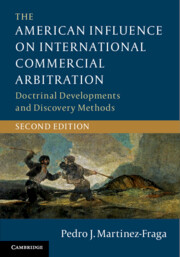Two separate and distinct phrases, each ascribed to a particular jurist, merit mention in a single sentence: The law is a jealous mistress and a seamless web. At first glance each clause on either side of the conjunctive appears unrelated to the other but for the common reference to “law.” Their intimate connection, however, cannot be obviated. Because the law in its application and theoretical development (jurisprudence) purports to address some of the most delicate and difficult issues that pervade all societies, ranging from the imposition of a death penalty through the legal status of abortion, to equally important concerns in the realms of family law, international disputes, free speech, freedom of assembly, the separation of church and state, and the propriety of juridic entities and attendant liabilities of virtually every ilk (to name just a few), the law cannot help but be all-consuming and seductive because of the very nature of her transcendent subject matter.
Similarly, it would be a misapprehension of the organizing principles that fashion legal subject matter to conclude that most of these issues indeed have “answers” that are certain, definitive, pristine, and universal: far from it. Hence, the “seamless web” envelops and enraptures both the practitioner and the theoretician. Like an encounter with infinity, the law has neither a beginning nor an end. It neither progresses nor degenerates but rather changes, at times in fascinating ways that appear to defy man’s wit. It is precisely the seductive charms of this change that best define the nature of this book.
This text does not purport to memorialize the history of arbitration within the U.S. common law. Instead, borrowing from Hegel’s famous text – The Philosophy of History – it is really a kind of “arbitration of history” as it aspires, perhaps wrongfully and rife with flaws, to identify with precision the very essence of the different stages of stare decisis in the area of U.S. doctrinal developments in international commercial arbitration. At times these developments appear minute, virtually nonexistent as the imperfections of language, made even worse by flaws in reasoning and the visceral application of doctrine (often dogmatically), without engaging in the introspection and reflection that the subject matter addressed very much deserves and compels. Thus, this modest effort seeks to underscore the 180 degrees that underlie doctrinal developments that are diametrically opposite, one degree at a time. Only thus is it possible to witness the brilliance and majesty of the common law in its developmental splendor, and in so witnessing it perhaps even intuit how best to improve on what has been learned, in order to, one day, maybe, with fear and trembling, aspire to the law’s perfect workings in the field of international commercial arbitration.

